I bring to your attention another essay from the series of stories "Directly to the South!" about my trip to the southernmost region of Uzbekistan. With previous essays you can find here.
So, this was the second day of our express tour to Termez. First our group was taken to the Museum of Archeology, then we plunged into our small bus and jumped towards the Afghan border and drove on to the mausoleum of Al-Khakim At-Tirmizi
I understand that many are not aware of who the At-Tirmizi is. To admit, I myself had very scant knowledge about this theologian and theologian, picked up from the lessons of religious studies in the school.
Abu Abdullah Muhammad ibn Ali al-Tirmidhi lived in the IXth-Xth centuries AD. He was the most prominent philosopher, theologian and natural scientist of that time. One of the largest representatives of Sufism (the religious trend in Islam). For extensive knowledge in various sciences he was nicknamed "Al-Hakim" (wise). As a young man, he performed the Hajj to Mecca, and then lived for some time in Baghdad, the center of Islamic culture and science of the time. Later he returned to Termez and lived there until his death. He was buried near the walls of the medieval citadel of Termez and the grave became a place of pilgrimage. A mausoleum was erected above his grave, which later expanded to the whole complex. In the XIX century, the mausoleum was rebuilt, and in 1990, in honor of the millennium anniversary of At-Tirmizi, under the auspices of UNESCO, large-scale restoration and restoration works were carried out.
But back to our trip - we rode along a narrow but well asphalted and well-groomed road. On the roadside, neatly trimmed trees grow.
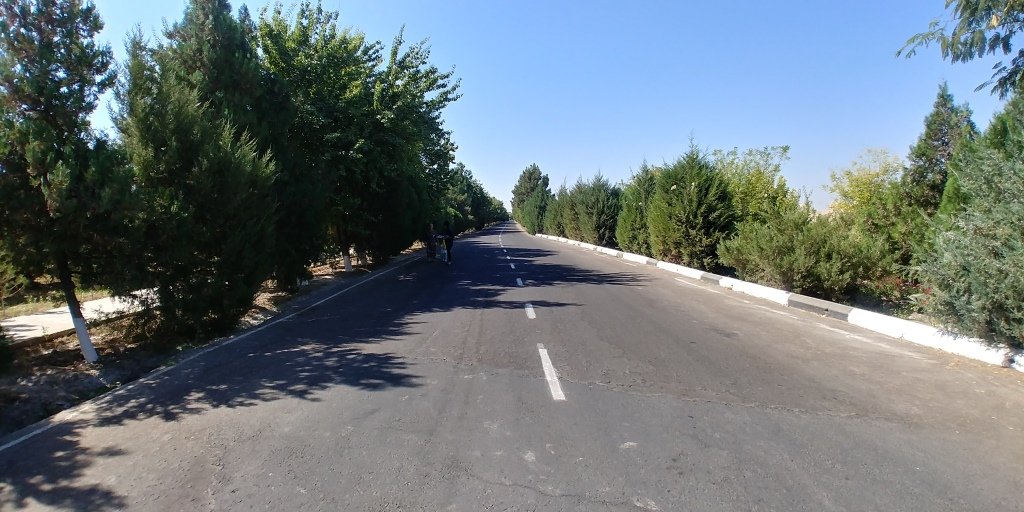
The road led us to a stylized medieval gate that was located at the entrance to the ancient citadel.
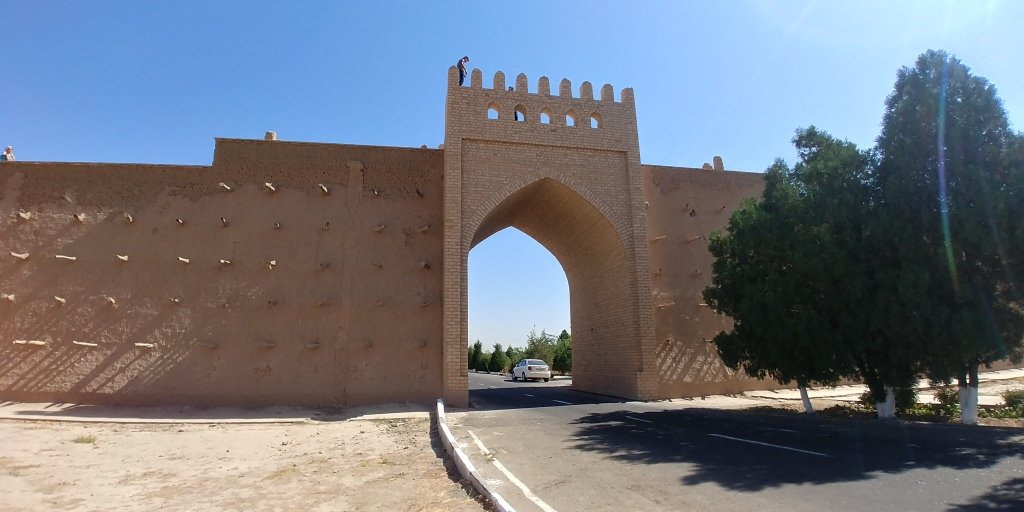
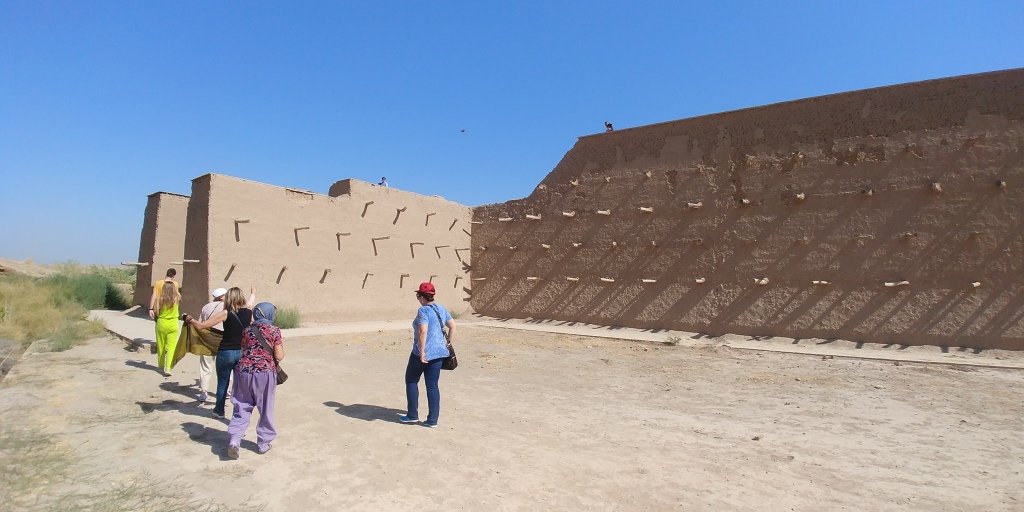
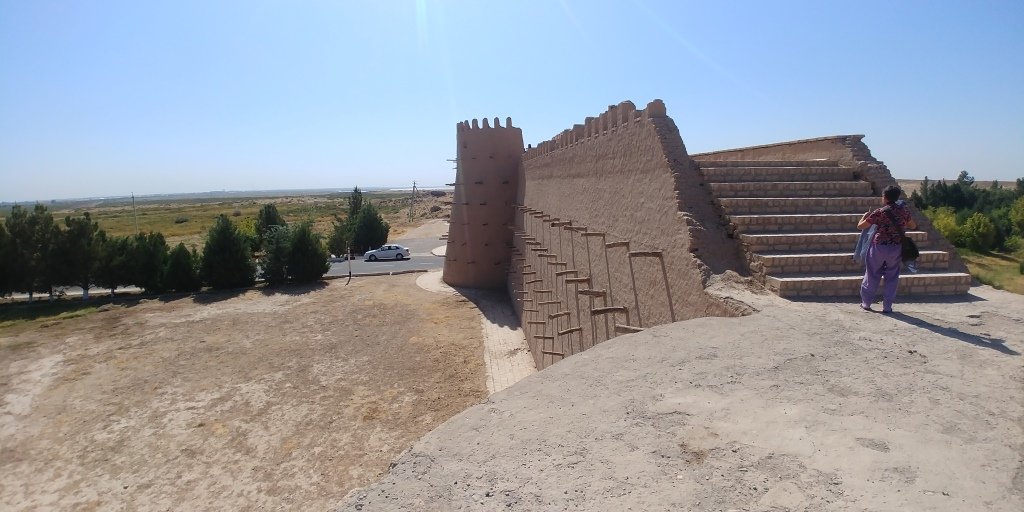
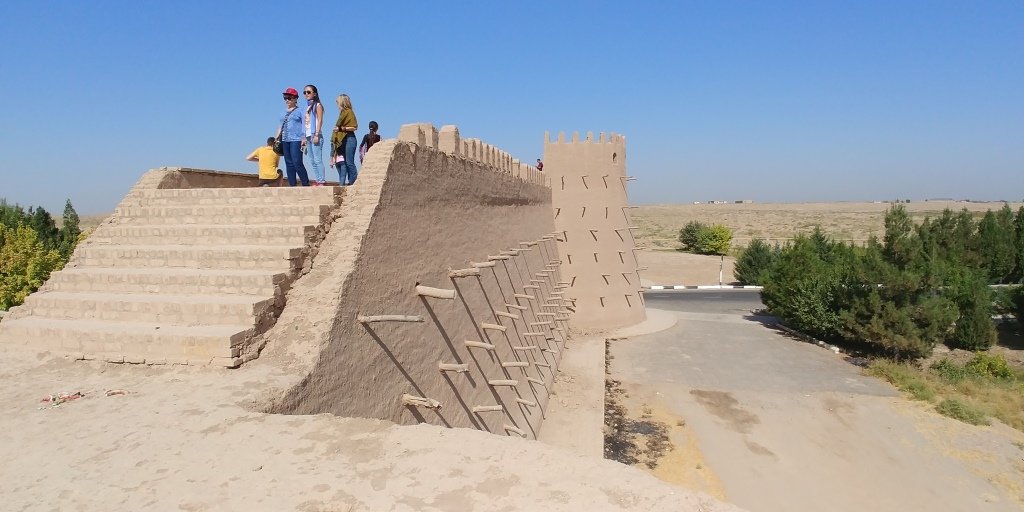
Of course, we stopped and examined this gate from all sides ...
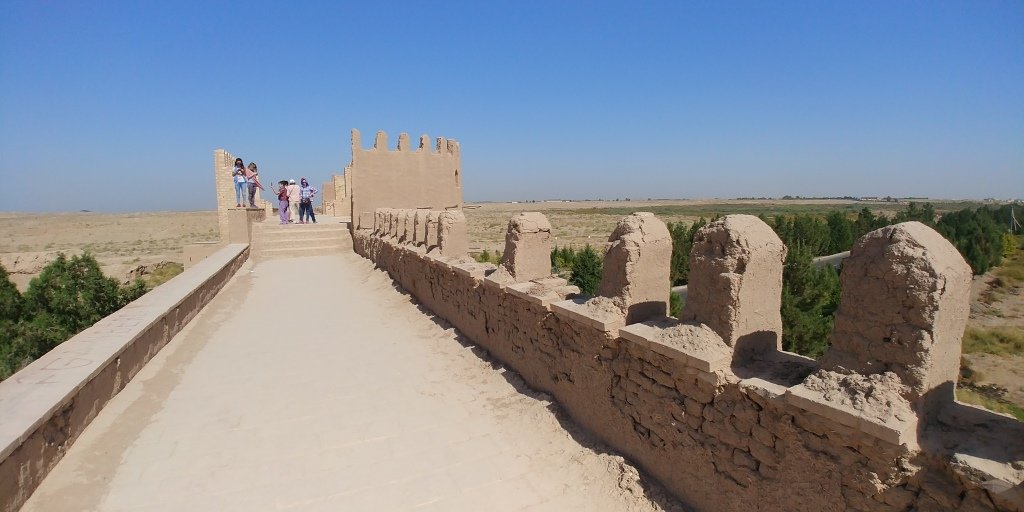
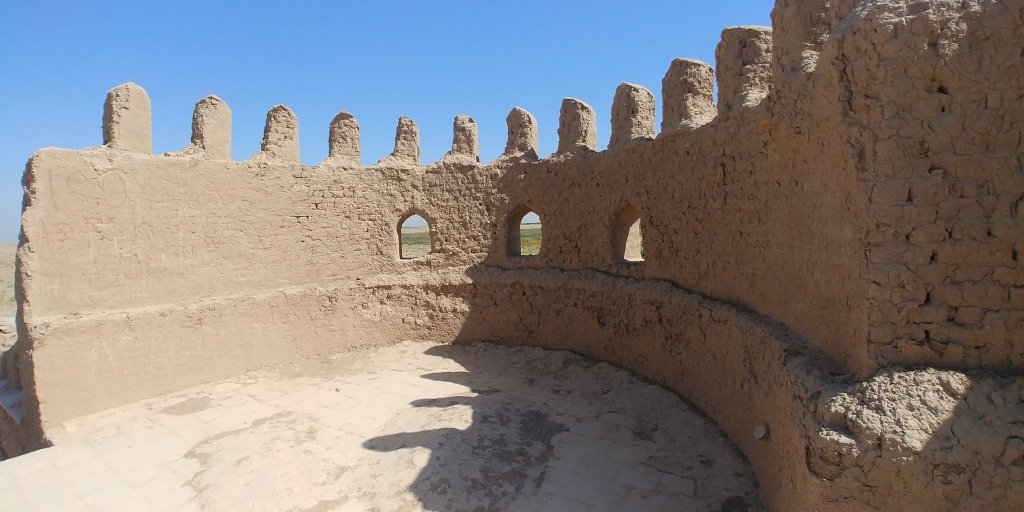

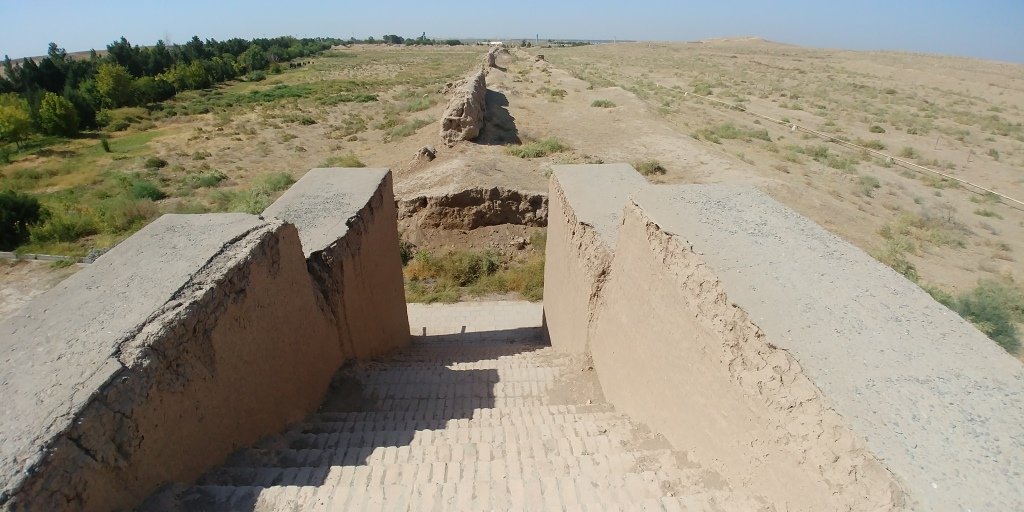

Here and there were the ruins of the old fortress walls of that era.
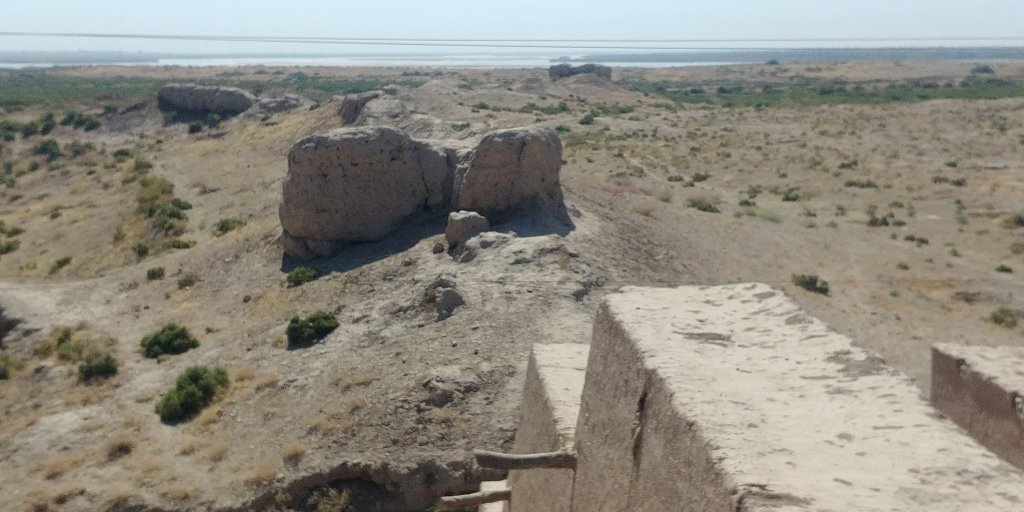
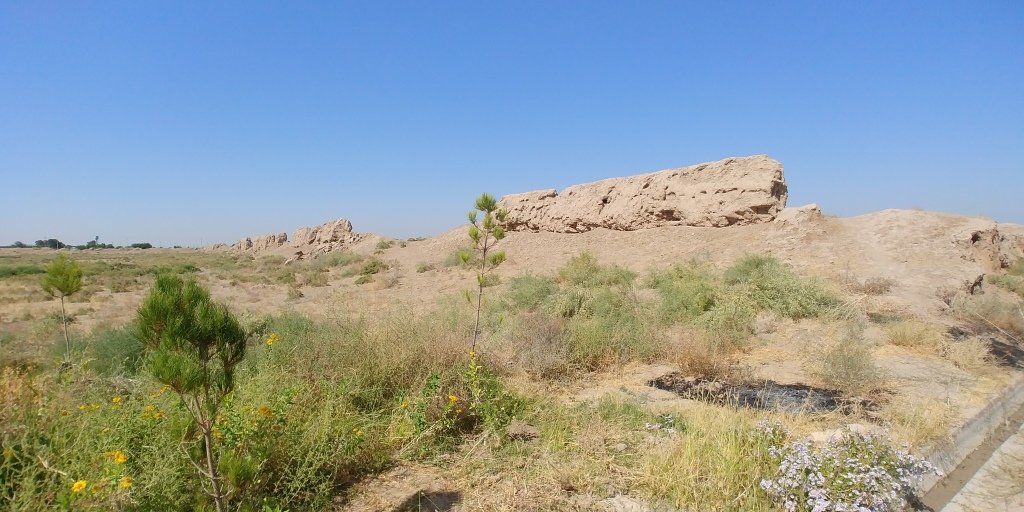
The mausoleum of At-Tirmizi is located on the border with Afghanistan and can be seen with the naked eye. And although this is barely visible to the naked eye, but I assure you, there are full of armed people on the border.
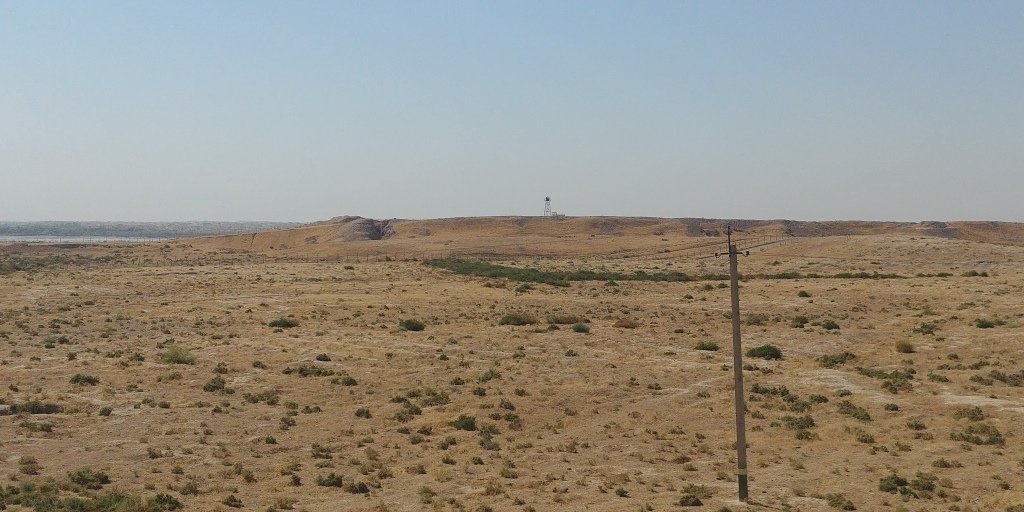
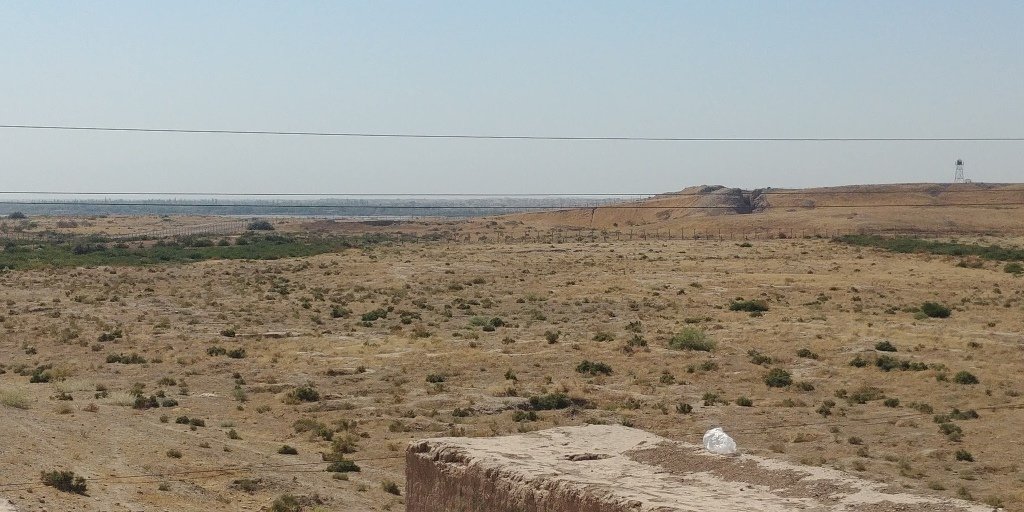
Despite the proximity to the border with Afghanistan, the At-Tirmizi complex is very popular with the local population. This is a large landscaped territory, on which besides the mausoleum itself there are also caves in which medieval ascetics, a museum and a park lived. We entered the territory of the complex. The entrance is made in the traditional Central Asian Islamic style - a large portal decorated with majolica and glaze. Although there is a slight difference - in Samarkand and Bukhara, the whole portal is usually decorated, and in the southern regions, basically all the buildings are made of burnt bricks with inserts from patterns.
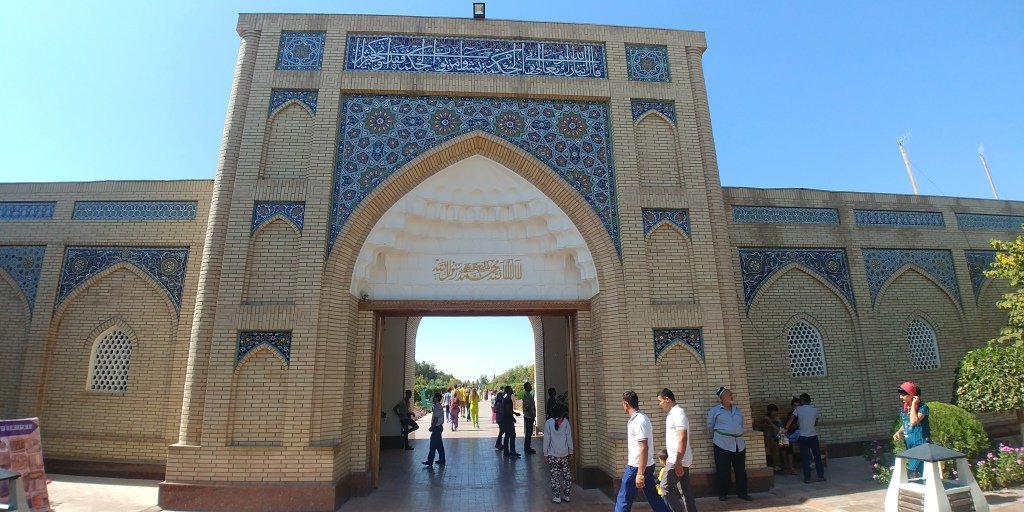

Termez, as I have already said, is the most southern city of our country and it is very hot here. Much hotter than in Tashkent. Nevertheless, in the complex of At-Tirmizi it can be seen that the administration is very carefully monitoring its condition.
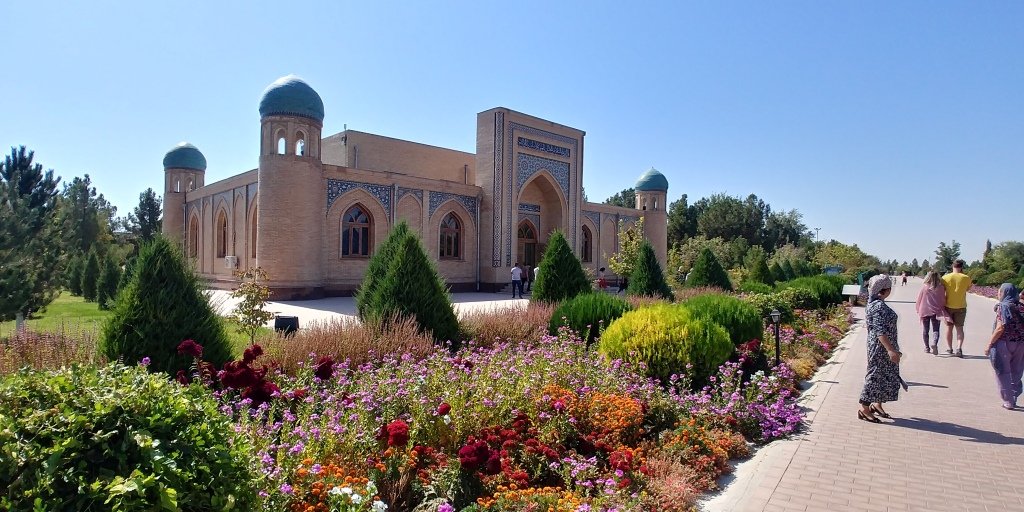
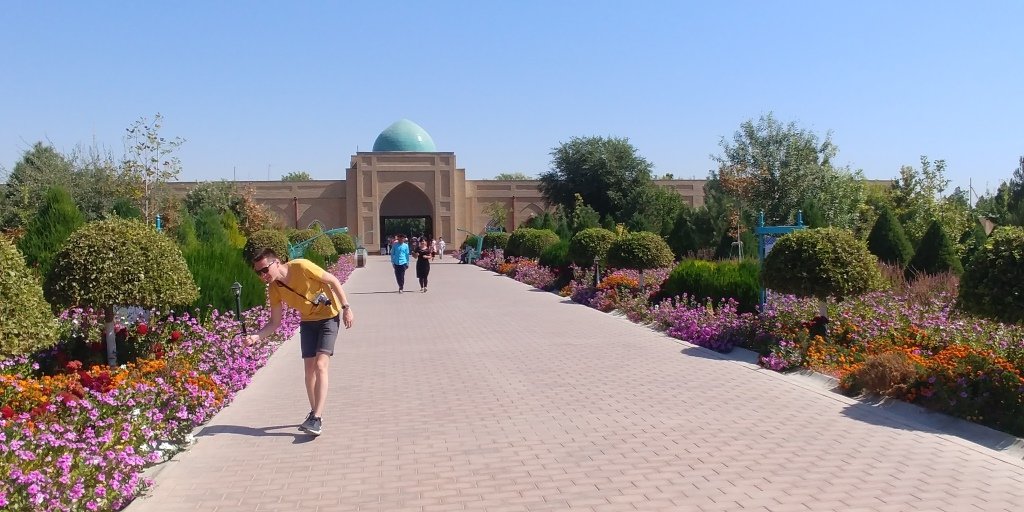
Here, even grow palm trees!
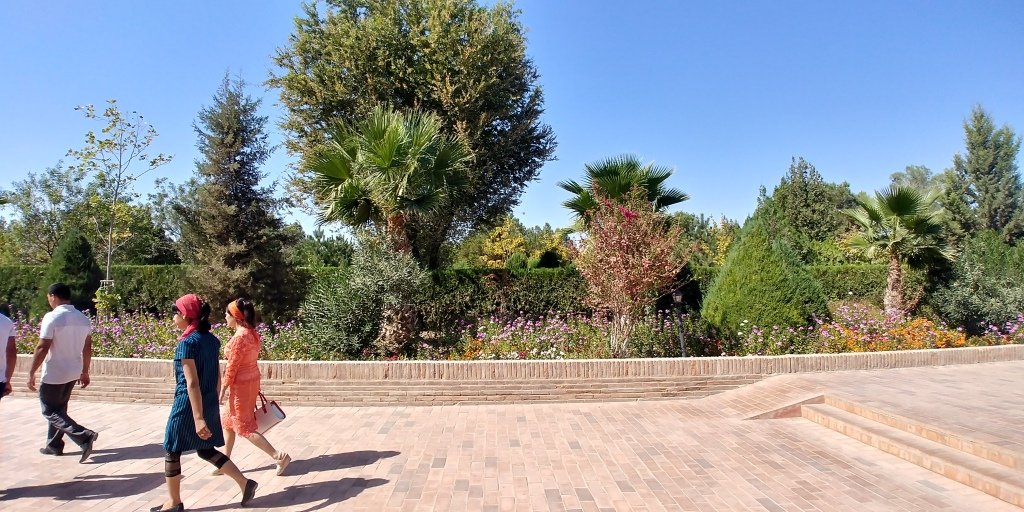
Other visitors to us constantly looked around and chuckled. To admit, I was somewhat surprised by this reaction - foreign tourists have long ceased to be a curiosity for local residents. Then I realized why we used such attention - one of the members of our group was apparently tired of carrying a bottle of water in his hands and put it on his head. And so, with a bottle on his head, he walked along the road.
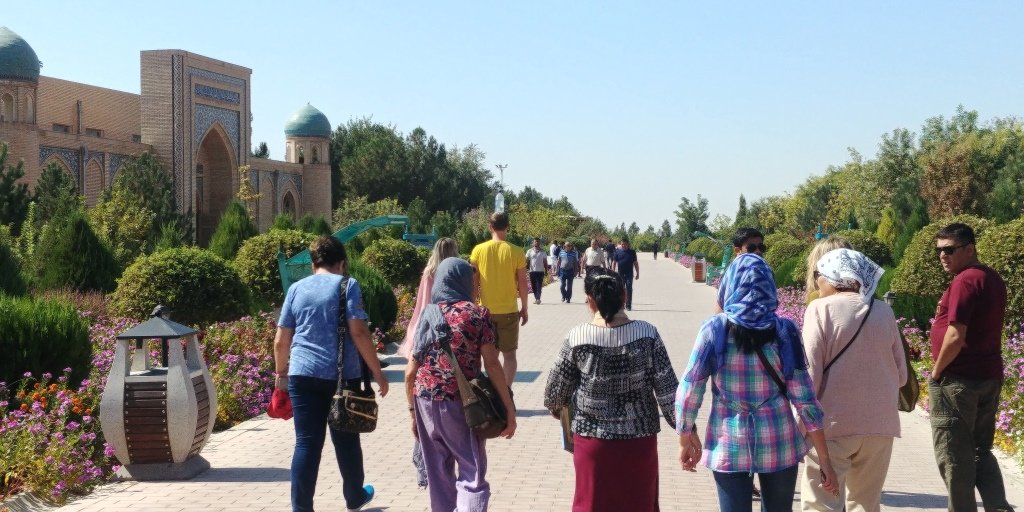
We approached the mausoleum. In addition to the grave itself, they also built a mosque in which religious services are conducted. This is a spacious building with high ceilings, adjacent to the mausoleum. The dome of the building is decorated with patterns in a traditional style.
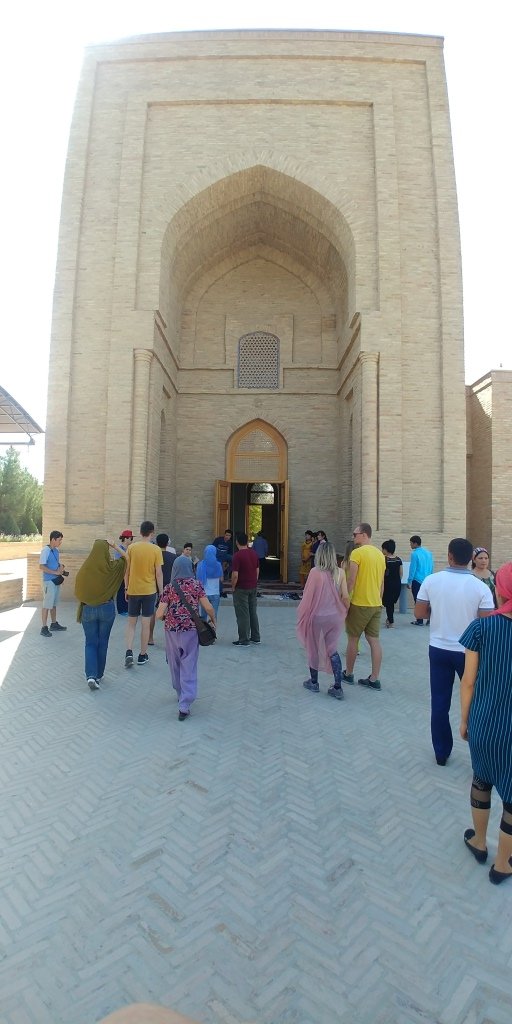
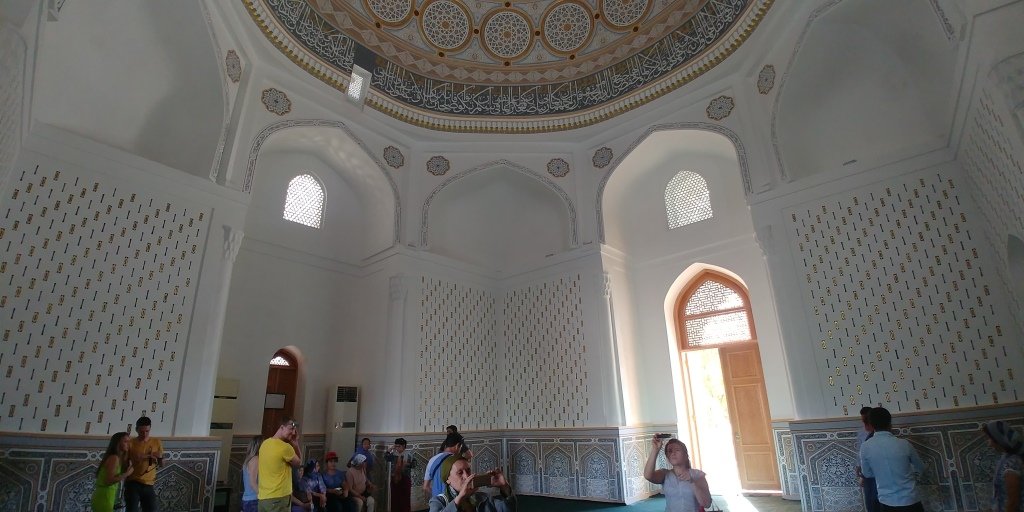
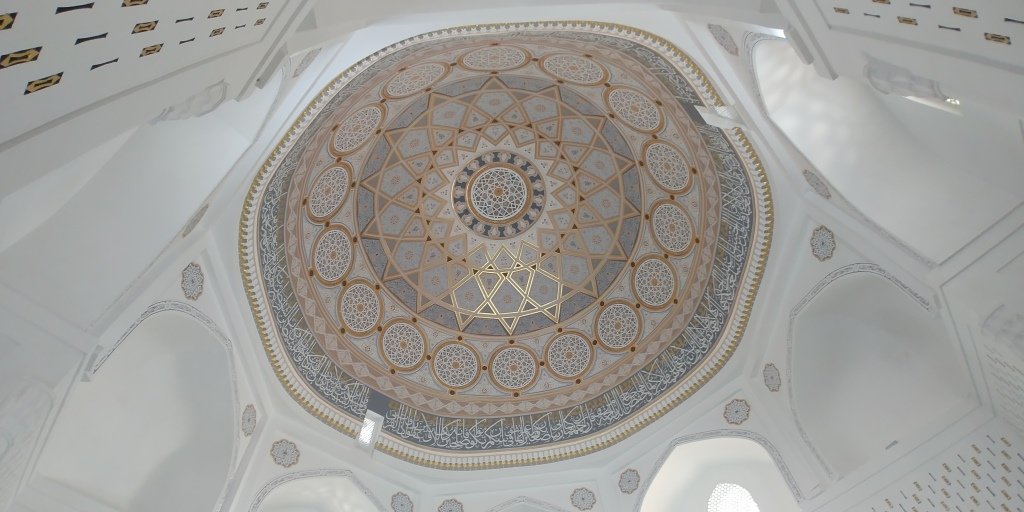
On the walls there are special cuts. As I was told, this was done in order to hear the voice of a mullah reading prayers in both rooms.
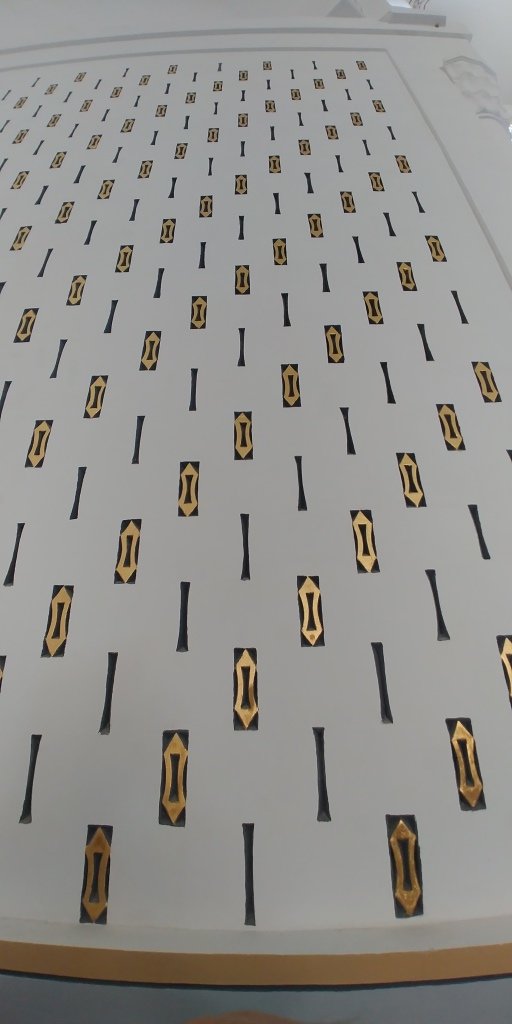
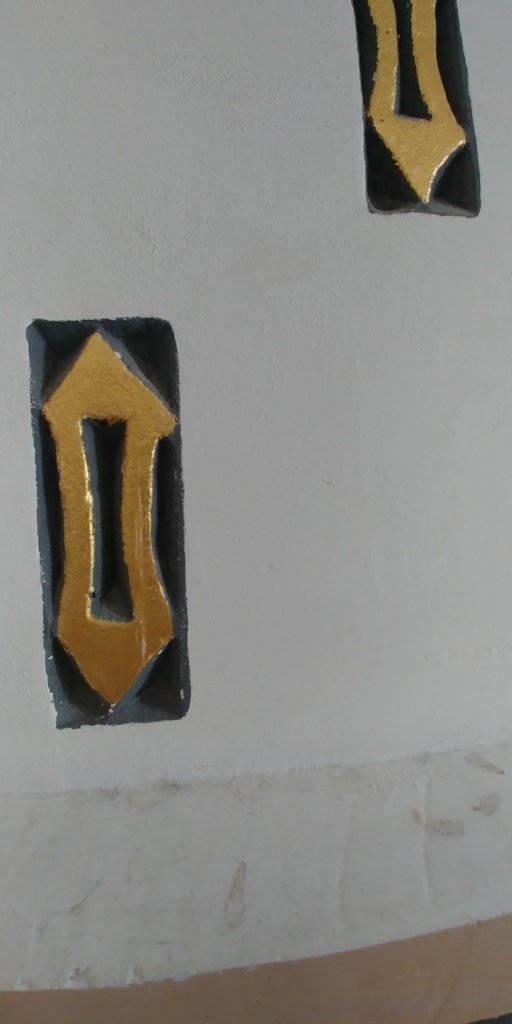
The walls are also carved with carved patterns.
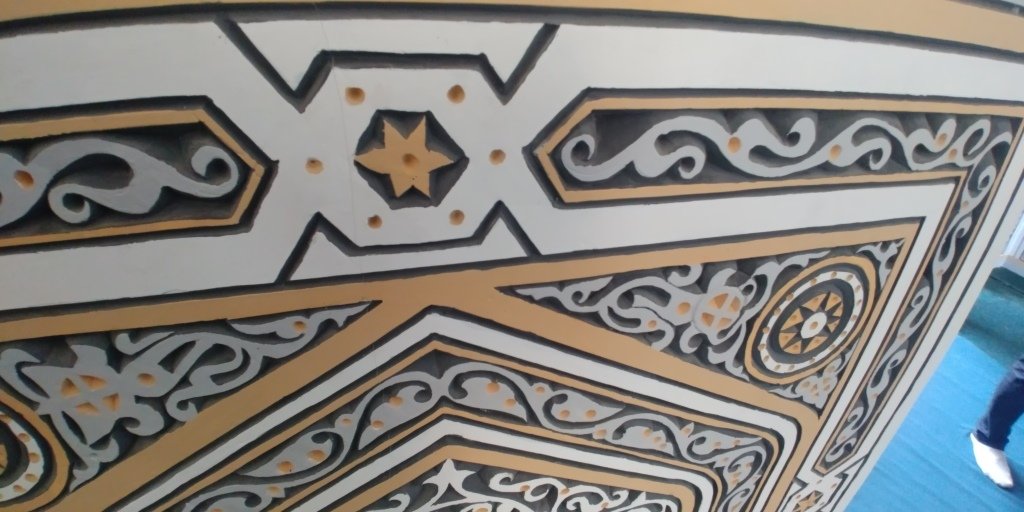
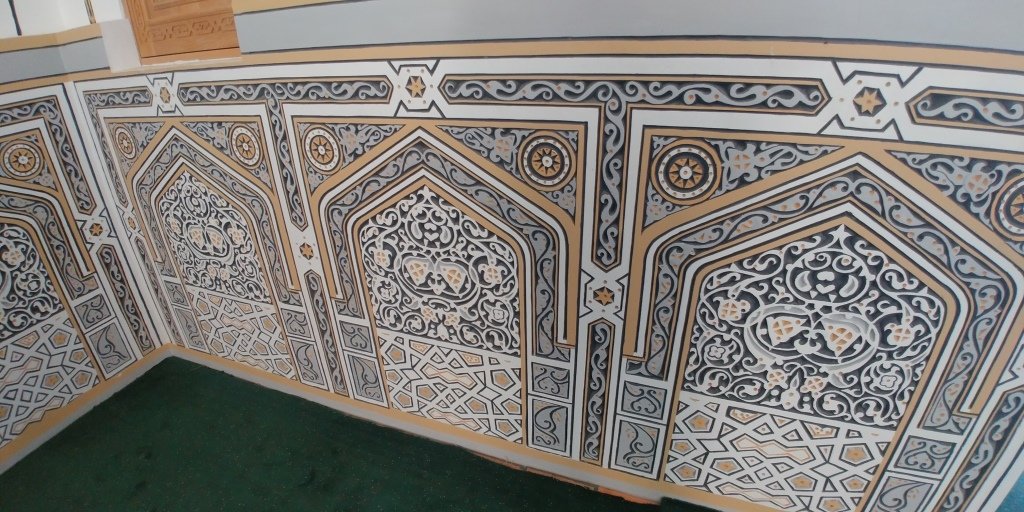
We took a lot of pictures, we entered another hall of the mosque, in which there is the grave of At-Tirmizi. Above his grave there is a tombstone made of white marble, on which inscriptions in Arabic are carved. Incredibly thin and skillful work!
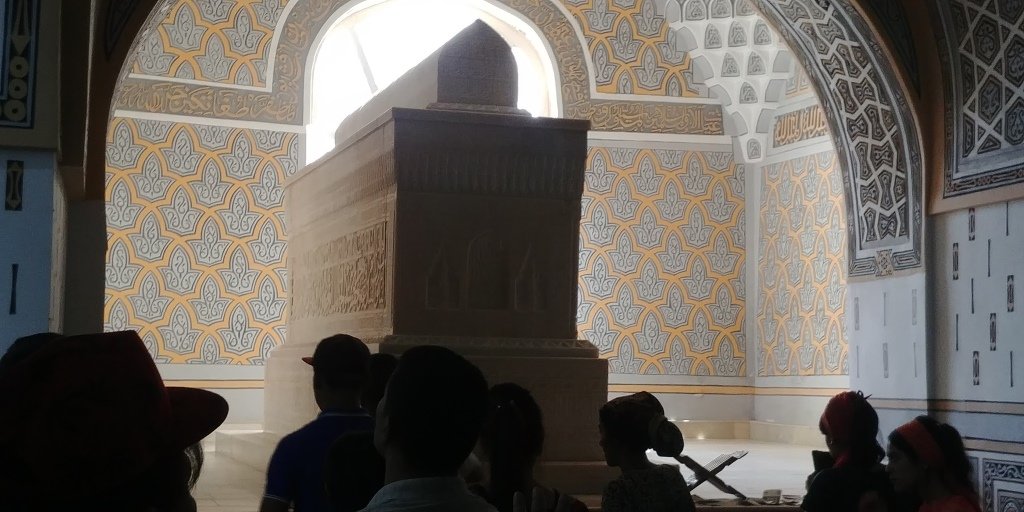
It's just a stone masterpiece. Marble tombstone was established during the reign of Tamerlane - XIV-XV century. The place of resting of Al-Tirmizi for many centuries enjoys great popularity among the population and thousands of people every year come to his grave. And everyone considers it their duty to touch the tombstone. Therefore, in the mausoleum there is a copy - made as skillfully as the original.
And the original gravestone is stored in a museum located on the territory of the complex. In the photos you can see the present tombstone. It is incredible, with what care and skill inscriptions and patterns are made. But he is more than 600 years old!
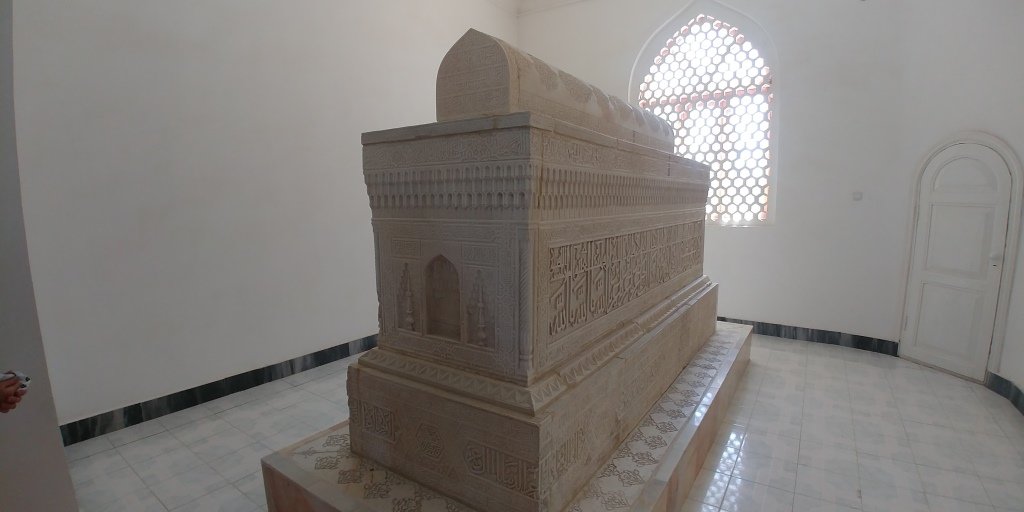
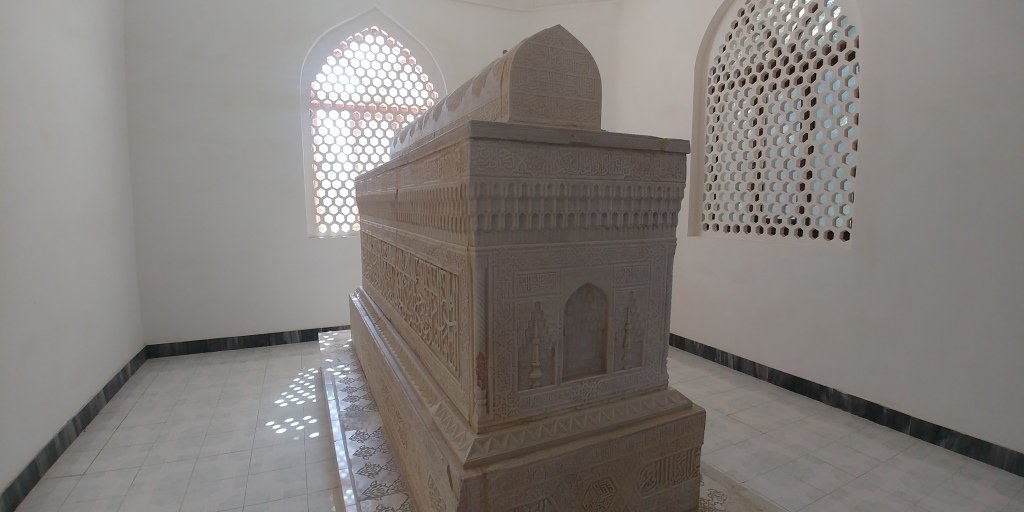
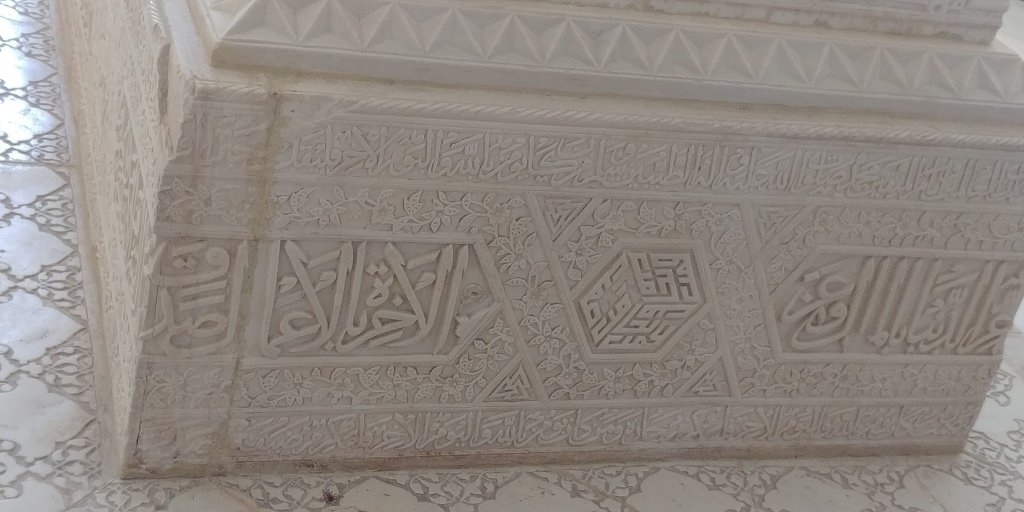
Look at the photo - see the hexagon in the center? It seems as if it is a drawing of a cube, as it is usually painted in textbooks on geometry - faces, sides, etc. But in fact it is not a pattern - an inscription in Arabic is cut inside the hexagon. I do not know how much they paid with medieval stone-cutters, but I think that they deserved every coin!
Near the mausoleum there are caves in which medieval ascetic ascetics lived. Of course, I climbed into the cave. Thank God, the passages there are quite wide and I could not be afraid to get stuck like Winnie the Pooh.

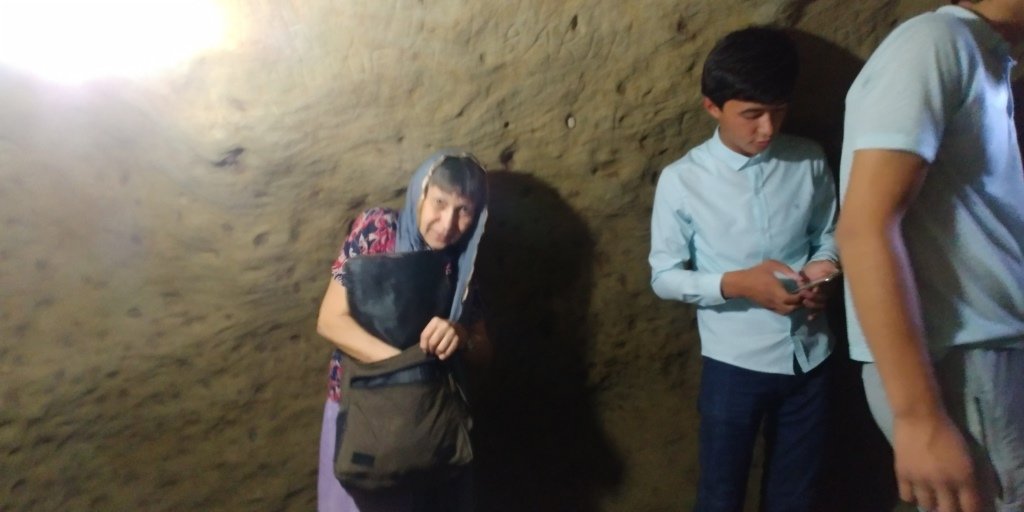
On the way back we turned into the museum. I already talked about him when I told you about the marble tombstone. Exposition of the museum, of course, is inferior to the Museum of Archeology of Termez, but there are also interesting exhibits.
For example, I really liked the fragment of the column of the Buddhist era - it is almost 2,000 years old!
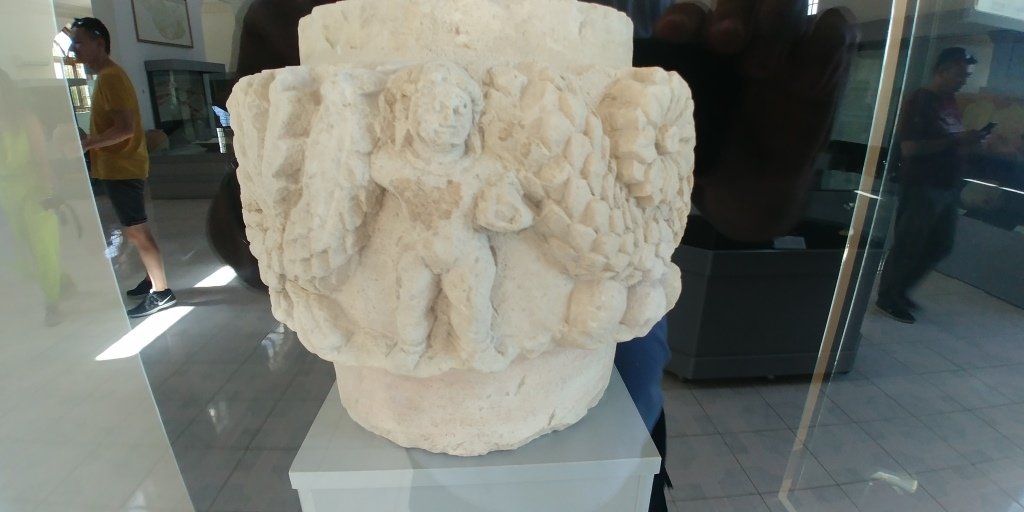
And these ceramic fragments are about a thousand years old:

This complex enjoys great popularity among the population - in arbours located on the territory of the complex people gather and share with each other brought treats. Once a week, ritual activities are conducted, food is prepared and distributed to all comers.
We leave the memorial complex of At-Tirmizi and head to the ancient Buddhist temple of Fayaz-Tepa. It will be my next story…
!steemitworldmap 37.265754 lat 67.189379 long At-Termizi Mausoleum d3scr

